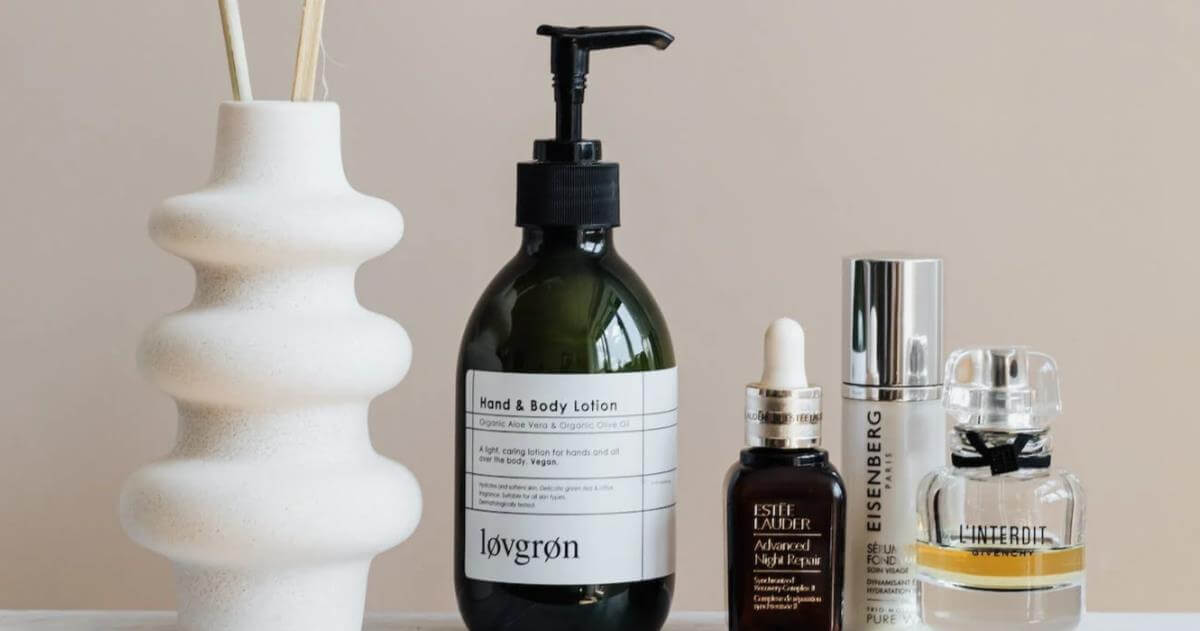Vitamins are essential to support our health, including that of our skin. Many of them can’t be produced by our bodies, meaning that we need to obtain them from external sources, such as a healthy diet. Although vitamin-rich foods are key to maintaining our body functioning, they may not be sufficient to provide substantial skin changes. For this reason, cosmetics loaded with vitamins can give extra support to your skin, so it can get all the benefits that vitamins can offer.
In this article, we will review the six vitamins you can find in your skincare products, their science-backed effects, and their different uses.
1.
VITAMIN A
Vitamin A derivatives – known as retinoids – play a major role in fighting the skin aging process, as well as improving acne and hyperpigmentation. Among them,
retinol
is the main derivative cleared for cosmetic use, while the rest are available only under prescription.
Vitamin A and its rejuvenating effect.
Retinoids are recognized as the gold standard in anti-aging skincare. They have been shown to improve the clinical features of aged appearance by reducing wrinkles, increasing smoothness, and decreasing hyperpigmentation [1].
How?
When topically applied, they [1]:
- Improve skin renewal by inducing exfoliation of dead cells in the stratum corneum and proliferation of new healthy cells.
- Increase the synthesis of elastin and collagen and promote the remodeling of the skin and the formation of new capillaries in the dermis, which improves skin firmness, hydration, and elasticity.
- Protect collagen against its destruction induced by degrading enzymes (MMPs).
Vitamin A evens skin tone
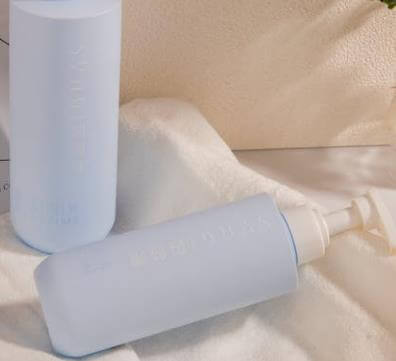
Retinoids may reduce the discoloration of the skin and its pigmentation by about 60% [1].
How?
By influencing the function of the melanocytes and the proper distribution of melanin in the skin, as well as blocking the transport of melanin to the outer layers of the skin [1].
Vitamin A improves acne
Retinoids can also regulate the function of sebaceous glands, and limit oil production [1], exerting anti-comedogenic effects [2].
How?
They regulate the process of shedding within sebaceous glands ducts, as well as decrease the enzymatic activity of lipogenesis and block the growth of sebocytes (aka oil-producing cells) [2].
Uses:
mainly in antiaging serums, creams, and oils, either for face or eye application. It must be used at night due to photosensitivity issues, and it requires applying sunscreen during the day.
Cons:
retinoids can irritate the skin, which normally limits their use, the reason why retinol is being replaced by or combined with its natural alternative
bakuchiol.
In ingredients listed as
Retinol, Retinyl Palmitate, Hydroxypinacolone Retinoate.
2.
VITAMIN B3
Vitamin B3, better known as niacinamide, is a key component of important enzymatic reactions that supply energy to the cells for their proper functioning.
B3 and skin barrier
Niacinamide may stabilize the skin barrier function by regulating keratin production, stimulating ceramides synthesis as well as skin renewal [3]. In this way, the skin barrier strengthens and reduces the transepidermal water loss, improving its moisture content [3].
B3 for a youthful-looking and even complexion
Clinical studies have shown that topical application of niacinamide at 4-5% improves a broad array of skin appearance, including fine lines and wrinkles, texture, hyperpigmentation spots, and blemishes, as well as increases elasticity, and reduces pores [4]. This results in an overall smooth and even complexion.
B3 decreases inflammation
Nicotinamide has been shown to reduce the production of inflammatory mediators and molecules induced by UV exposure or involved in acne development [4].
Uses:
mainly found in serums, creams, and sunscreens.
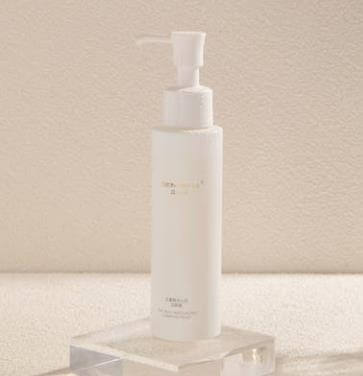
In ingredients are listed as
Niacinamide.
3.
PRO-VITAMIN B5
Pro-Vitamin B5 is commonly known as D-Panthenol, a precursor of Vitamin B5.
B5 moisturizes the skin
Topical D-Panthenol acts as a moisturizer agent, able to improve skin hydration, reducing transepidermal water loss and maintaining skin softness and elasticity [5].
B5 repairs the skin
D-Panthenol may stimulate the re-epithelization of skin with new tissue, a key factor in wound healing. At concentrations of 2 to 5%, it may stimulate the regeneration of injured human skin [5].
Additionally, it has been shown to have an anti-inflammatory effect on UV-induced irritation [5].
Uses:
in soothing or hydrating serums and creams. Also added to after-sun formulations or after-shaving products for skin repair.
In ingredients listed as
Panthenol.
4.
VITAMIN C
Vitamin C, also known as L-ascorbic acid, has become a must-have ingredient in any skincare routine. It’s used in cosmetics for its multiple benefits, being mainly recognized as the go-to molecule for a “skin glow”.
Vitamin C as an antioxidant agent
It’s the most abundant antioxidant in human skin, involved in a complex antioxidant system that acts as a skin defense against free radicals produced [6] upon exposure to UV light or pollution. Since exposure to UV light reduces the amount of Vitamin C available in the skin [6], its topical application is key to replenishing it.
Vitamin C in photoprotection
UV light can harm skin cells by altering their DNA, membranes, and cellular proteins, including collagen [6]. It also induces the production of collagen-degrading enzymes and increases the number of mediators that contribute to inflammation and skin aging [6]. Vitamin. C can help neutralize such detrimental effects and protect against photodamage.
In clinical studies, Vitamin C has been proven to reduce sunburn damage [7], and it’s been credited as a sunscreen efficacy booster to enhance UV protection [6].
Vitamin C increases collagen production
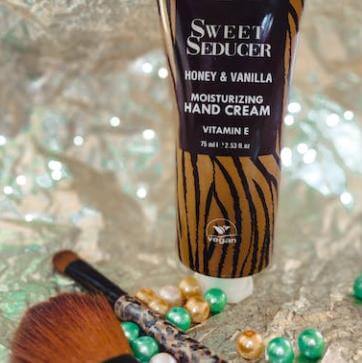
Research has revealed that Vitamin C is an essential molecule stimulating collagen biosynthesis by several mechanisms. It can assist the enzymes responsible for stabilizing and cross-linking the collagen molecules and stimulate collagen gene expression and transcription [6]. In this way, Vitamin C is an ally in the reduction of the signs of aging, such as wrinkles and fine lines.
Vitamin C and brightness
It can also mediate an anti-pigmentary effect by blocking the enzyme tyrosinase, responsible for producing melanin in the skin [6]. In this way, it can help to even the skin tone and reduce dark spots.
Uses:
in the form of serums, lotions, creams, and oils mainly claiming to brighten and reduce dark spots. Also in sunscreen formulations, such as the Garnier UV Matte Brightening Sunscreen SPF50+ PA+++. It’s normally combined with Vitamin E to potentiate its antioxidant action.
In ingredients listed as
Sodium Ascorbyl Phosphate, Magnesium Ascorbyl Phosphate, Ascorbyl Glucoside, 3-O-Ethyl Ascorbic Acid, Ascorbyl Palmitate, Ascorbyl Tetraisopalmitate.
5.
VITAMIN E
Vitamin E, known as tocopherol, has been used in skincare products for over 50 years [1]. Its cosmetic benefits are attributed to its superior antioxidant properties.
Vitamin E and its antioxidant effects
The main physiologic function attributed to Vitamin E is contributing to the antioxidant defenses and protecting the skin against oxidative stress induced by environmental factors, such as UV light and pollution. Its antioxidant ability to scavenge free radicals and become part of skin lipid structures is what makes Vitamin E an ideal molecule to help fight skin aging [1]. Most of the over-the-counter antiaging creams contain 0.5%–1% of Vitamin E [8].
Other skin benefits
Research also indicates that Vitamin E displays photoprotective (mostly when combined with Vitamin C), firming and hydrating properties, as well as improving the elasticity, structure, and softness of the skin [1].
Uses:
it can be part of almost any skincare product, including moisturizer creams, serums, masks, toners, oils, cleansers, body wash, lip balms, sunscreens, and more.
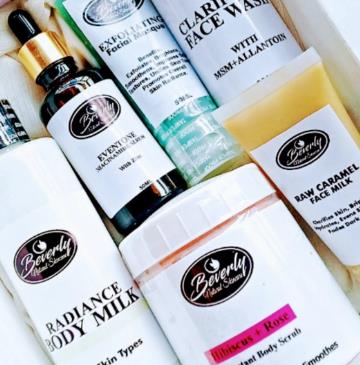
In ingredients listed as
Tocopherol, Tocopheryl Acetate.
6.
VITAMIN F
Despite the name, Vitamin F isn’t technically a vitamin. The “F” in the name refers to “Fats” since it’s the combination of two essential polyunsaturated fatty acids: linoleic acid (omega-6) and α-linolenic acid (omega-3).
Vitamin F in skin barrier function
Linoleic and α-linolenic acids are two of the main components of the skin barrier. Alongside ceramides and cholesterol, these fatty acids function as
emollients
, helping to form the “intercellular cement”, a sort of fatty fluid able to act as a “glue” that maintains corneocytes (skin’s outer layer cells) together, preserving skin structure.
With such intracellular cement, skin can maintain its effective barrier function, limiting transepidermal water loss, thus
ensuring skin hydration
and protecting against external factors [1].
Uses:
in the format of oils or lotions/creams with Vitamin F or omega complexes. One popular example is the Drunk Elephant F-Balm Electrolyte Waterfacial Mask.
In ingredients are listed as
Linoleic Acid and Linolenic Acid. Nonetheless, sometimes they can be part of different plant seed oils listed instead.
THE TAKEAWAY
The topical application of skincare products rich in vitamins can certainly support the skin condition in many ways. Vitamins assist in many metabolic and physiologic processes to maintain the proper functioning of our skin cells, as well as preserve skin structure and its protective defenses. Therefore, vitamins become essential ingredients to include in any skincare routine. Selecting the right one(s) for you will depend on the specific skin concern you want to treat, but one thing is sure: just name it and we bet there is a vitamin (or a couple of them) that can be of help.
REFERENCES
[1] Michalak, M., Pierzak, M., Krecisz, B., & Suliga, E. (2021). Bioactive Compounds for Skin Health: A Review. Nutrients, 13 (1), 203. https://doi.org/10.3390/nu13010203
[2] Zasada, M., & Budzisz, E. (2019). Retinoids: active molecules influencing skin structure formation in cosmetic and dermatological treatments. Postepy Dermatologii I Alergologii, 36 (4), 392–397. https://doi.org/10.5114/ada.2019.87443
[3] Gehring, W. J. (2004). Nicotinic acid/niacinamide and the skin. Journal of Cosmetic Dermatology, 3 (2), 88–93. https://doi.org/10.1111/j.1473-2130.2004.00115.x
[4] Boo, Y. C. (2021). Mechanistic Basis and Clinical Evidence for the Applications of Nicotinamide (Niacinamide) to Control Skin Aging and Pigmentation. Antioxidants, 10 (8), 1315. https://doi.org/10.3390/antiox10081315
[5] Ebner, F., Heller, A., Rippke, F., & Tausch, I. (2002). Topical Use of Dexpanthenol in Skin Disorders. American Journal of Clinical Dermatology, 3 (6), 427–433. https://doi.org/10.2165/00128071-200203060-00005
[6] Telang, P. S. (2013). Vitamin C in dermatology. Indian Dermatology Online Journal, 4 (2), 143. https://doi.org/10.4103/2229-5178.110593
[7] Ravetti, S., Clemente, C. M., Brignone, S. G., Hergert, L. Y., Allemandi, D. A., & Palma, S. D. (2019). Ascorbic Acid in Skin Health. Cosmetics, 6 (4), 58. https://doi.org/10.3390/cosmetics6040058
[8] Keen, M. A., & Hassan, I. (2016). Vitamin E in dermatology. Indian Dermatology Online Journal, 7 (4), 311. https://doi.org/10.4103/2229-5178.185494

 By myulikeadmin
By myulikeadmin
